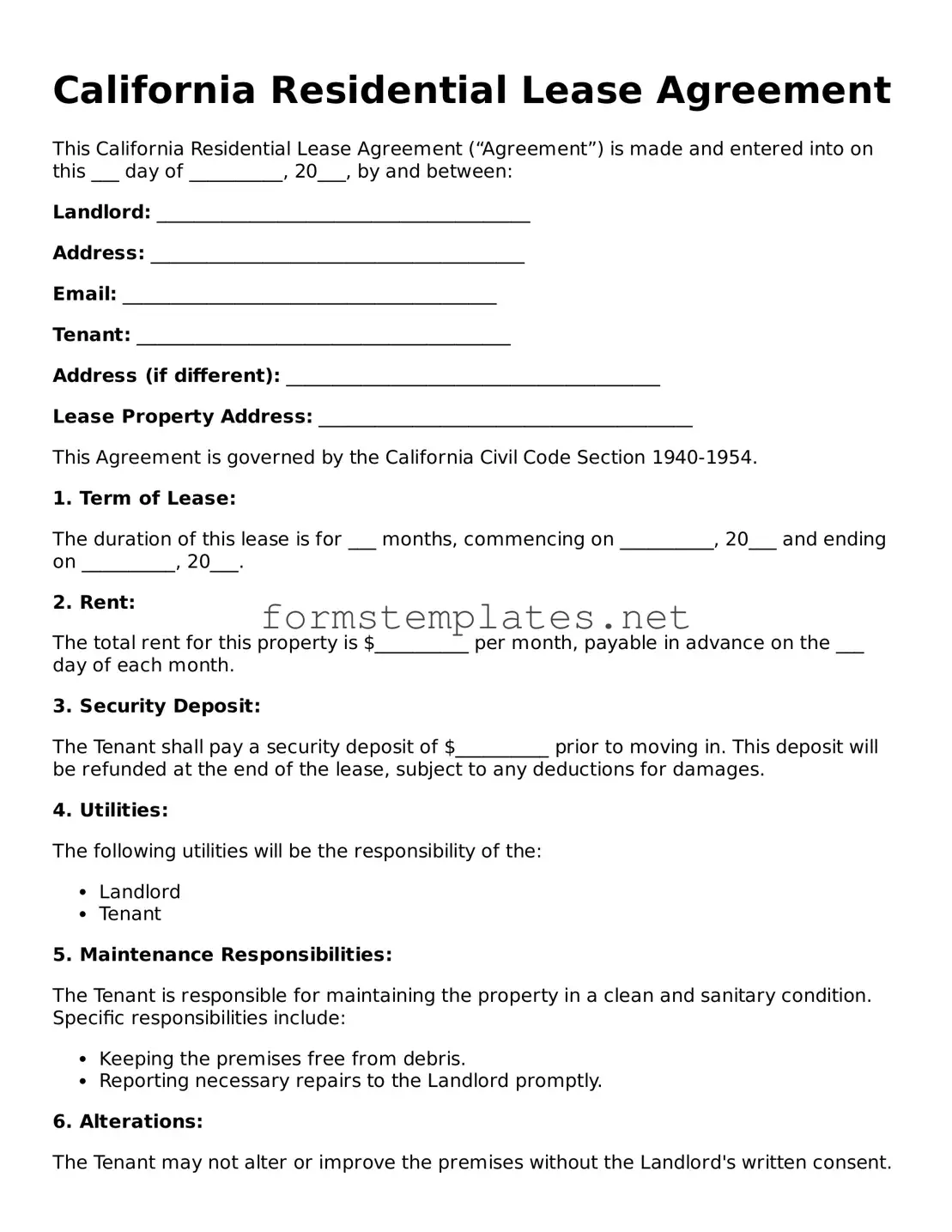California Residential Lease Agreement
This California Residential Lease Agreement (“Agreement”) is made and entered into on this ___ day of __________, 20___, by and between:
Landlord: ________________________________________
Address: ________________________________________
Email: ________________________________________
Tenant: ________________________________________
Address (if different): ________________________________________
Lease Property Address: ________________________________________
This Agreement is governed by the California Civil Code Section 1940-1954.
1. Term of Lease:
The duration of this lease is for ___ months, commencing on __________, 20___ and ending on __________, 20___.
2. Rent:
The total rent for this property is $__________ per month, payable in advance on the ___ day of each month.
3. Security Deposit:
The Tenant shall pay a security deposit of $__________ prior to moving in. This deposit will be refunded at the end of the lease, subject to any deductions for damages.
4. Utilities:
The following utilities will be the responsibility of the:
5. Maintenance Responsibilities:
The Tenant is responsible for maintaining the property in a clean and sanitary condition. Specific responsibilities include:
- Keeping the premises free from debris.
- Reporting necessary repairs to the Landlord promptly.
6. Alterations:
The Tenant may not alter or improve the premises without the Landlord's written consent.
7. Pets:
The Tenant: is / is not allowed to have pets on the premises. If allowed, there may be additional pet fees and deposits.
8. Termination:
- This Agreement may be terminated by either party with a written notice of at least 30 days.
- Upon termination, the Tenant agrees to vacate the premises by the specified date.
9. Governing Law:
This Agreement shall be governed by the laws of the State of California.
IN WITNESS WHEREOF, the parties hereto have executed this California Residential Lease Agreement as of the date first written above.
Landlord Signature: _______________________________ Date: ____________
Tenant Signature: ________________________________ Date: ____________
